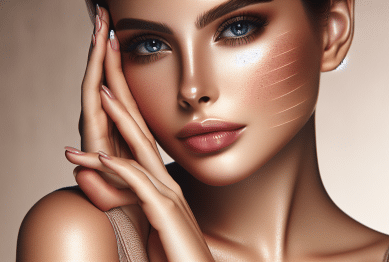Most of us check our phones dozens of times a day. For news, for entertainment, for a momentary break from real life. According to Statista, the average person spends more than 3 hours a day on their smartphone [1]. That’s nearly 1,100 hours a year. But a growing trend is shifting the narrative: turning phone time into learning time without the pressure.

This isn’t about downloading a dozen apps or starting a new course you’ll forget after a week. It’s about smart, low-effort changes to your habits—where your scroll becomes just a little more intentional.
Why Microlearning Fits Modern Life
We’re not wired to sit through long, uninterrupted sessions of information. That’s where microlearning—short, digestible bursts of content—comes in. Research published in the International Journal of Educational Technology in Higher Education confirms that microlearning can enhance retention and engagement, especially when time is limited [2].
It works because it fits into daily routines. Watching a 60-second explainer while waiting in line. Listening to a 10-minute podcast while folding laundry. It’s learning, but it doesn’t feel like a chore.
How to Start Turning Phone Time Into Learning Time Without the Pressure
You don’t need to overhaul your phone usage. A few subtle adjustments can turn passive scrolling into useful screen time.
1. Rebuild Your Feed for Curiosity
Your algorithm responds to what you engage with. Start liking, following, and saving content that offers value—whether it’s short explainers on climate science, language tips, or financial advice.
- On TikTok and Instagram, explore hashtags like #learnontiktok or #mindfulscrolling.
- On YouTube, try channels like Kurzgesagt, Big Think, or RealLifeLore for visual learning.
By changing your feed, you’re reshaping your habits without formal effort.
2. Use Passive Learning Apps
Apps like Blinkist, Audible, and Pocket offer ways to absorb content during moments when you’d normally scroll aimlessly.
- Blinkist gives you the main ideas of books in 15 minutes.
- Audible offers podcasts, lectures, and audiobooks you can listen to during commutes or chores.
- Pocket lets you save long articles and revisit them offline.
There’s no pressure to finish a course or stick to a rigid structure. You engage when it works for you.
3. Set Up Smart Reminders Without Guilt
Instead of setting alarms that feel like deadlines, use widgets and passive reminders. Apps like Word of the Day, Curio, or Brilliant give bite-sized information on your lock screen or via optional push notifications.
Every time you unlock your phone, you’re greeted with something thought-provoking—without needing to dive into a learning session.
4. Redefine “Entertainment” with Edutainment
Not all learning has to feel academic. The rise of educational creators has blurred the line between learning and entertainment.
Examples of high-quality, engaging accounts:
- @sharonsaysso – U.S. government made simple
- @nourish_and_fete – bite-sized culinary history and cooking science
- @thephysicsgirl – everyday science explained clearly
According to Pew Research, over 40% of Gen Z users report having learned something valuable from short-form content on social platforms [3]. It’s not only possible—it’s already happening.
5. Keep It Light and Flexible
One of the most important parts of turning phone time into learning time without the pressure is exactly that—no pressure. Avoid building routines that become rigid or overwhelming. Instead, focus on ease and flexibility.
Tips for sustainable, low-stress engagement:
- Rotate topics weekly to keep it fresh
- Choose 1–2 platforms you already enjoy
- Keep learning time under 30 minutes a day
- Don’t track progress obsessively—trust the process
Learning becomes more powerful when it doesn’t feel forced.
What This Trend Means for Modern Lifestyles
The popularity of short-form educational content is more than a passing trend—it’s a shift in how people absorb knowledge. As more of daily life moves online, we’re learning to leverage the same tools that distract us for actual personal development.
This shift isn’t about avoiding screens. It’s about redefining how we use them. Instead of going “offline,” we go intentional.
By turning phone time into learning time without the pressure, we make growth feel like a natural part of life, not another item on a to-do list.
Final Thoughts
Not everyone wants to take a deep dive into complex subjects or follow structured online courses. But most people want to feel like they’re learning or growing—even in small ways.
The solution isn’t cutting back on screen time entirely. It’s making that screen time count. Curate your digital environment. Choose creators and tools that spark interest. And allow learning to feel casual, fun, and pressure-free.
When you treat your phone like a tool—not a distraction—you turn one of your most-used devices into a steady stream of knowledge.
References
[1] Statista. (2024). Time spent on mobile phones worldwide.
https://www.statista.com/statistics/781692/worldwide-daily-time-on-smartphone/
[2] Hug, T. (2020). Microlearning: A strategy for real-world learning. International Journal of Educational Technology in Higher Education.
https://educationaltechnologyjournal.springeropen.com/articles/10.1186/s41239-020-00117-4
[3] Pew Research Center. (2023). How Gen Z is using TikTok to learn.
https://www.pewresearch.org/internet/2023/09/11/gen-z-tiktok-learning/









